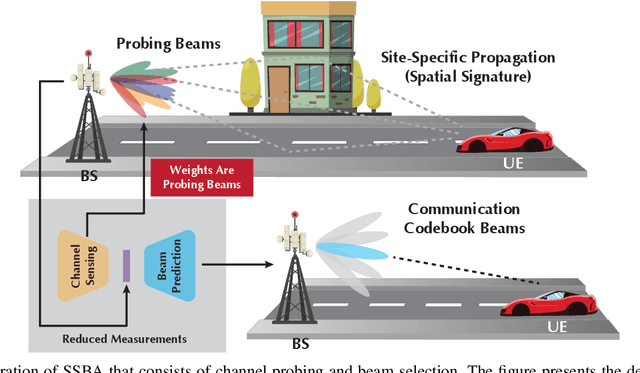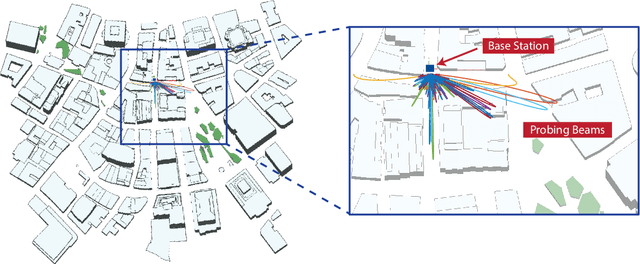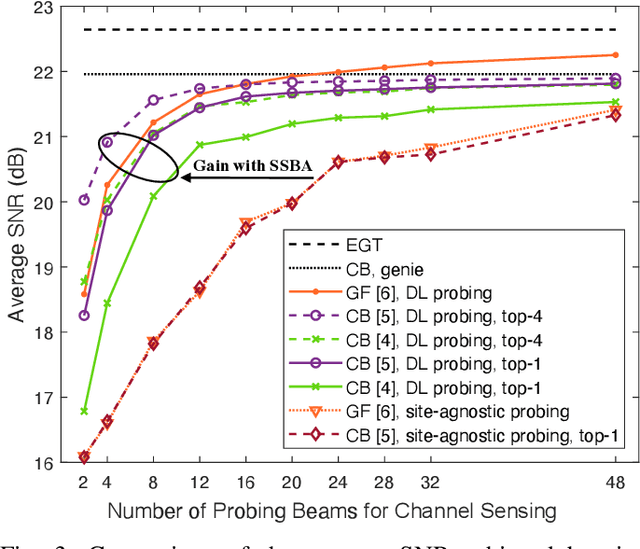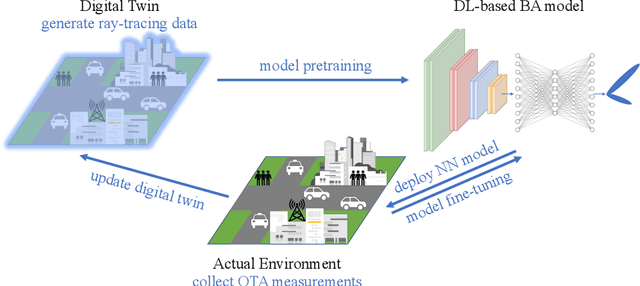Site-Specific Beam Alignment in 6G via Deep Learning
Paper and Code
Mar 24, 2024



Beam alignment (BA) in modern millimeter wave standards such as 5G NR and WiGig (802.11ay) is based on exhaustive and/or hierarchical beam searches over pre-defined codebooks of wide and narrow beams. This approach is slow and bandwidth/power-intensive, and is a considerable hindrance to the wide deployment of millimeter wave bands. A new approach is needed as we move towards 6G. BA is a promising use case for deep learning (DL) in the 6G air interface, offering the possibility of automated custom tuning of the BA procedure for each cell based on its unique propagation environment and user equipment (UE) location patterns. We overview and advocate for such an approach in this paper, which we term site-specific beam alignment (SSBA). SSBA largely eliminates wasteful searches and allows UEs to be found much more quickly and reliably, without many of the drawbacks of other machine learning-aided approaches. We first overview and demonstrate new results on SSBA, then identify the key open challenges facing SSBA.
 Add to Chrome
Add to Chrome Add to Firefox
Add to Firefox Add to Edge
Add to Edge